The world of crocodilians is diverse and fascinating, but among this ancient family of reptiles, one member stands out as particularly unique. The gharial (Gavialis gangeticus), with its distinctive slender snout and specialized lifestyle, represents one of evolution’s most remarkable adaptations. Native to the Indian subcontinent, these critically endangered creatures differ dramatically from their crocodile and alligator cousins in ways that showcase the incredible diversity within the crocodilian order. While casual observers might lump all long-snouted reptiles into a single category, zoologists recognize gharials as truly exceptional creatures with adaptations unlike any other living crocodilian. This article explores ten compelling reasons why gharials break the crocodilian mold and deserve special recognition as evolutionary marvels.
Their Distinctive Needle-Like Snout
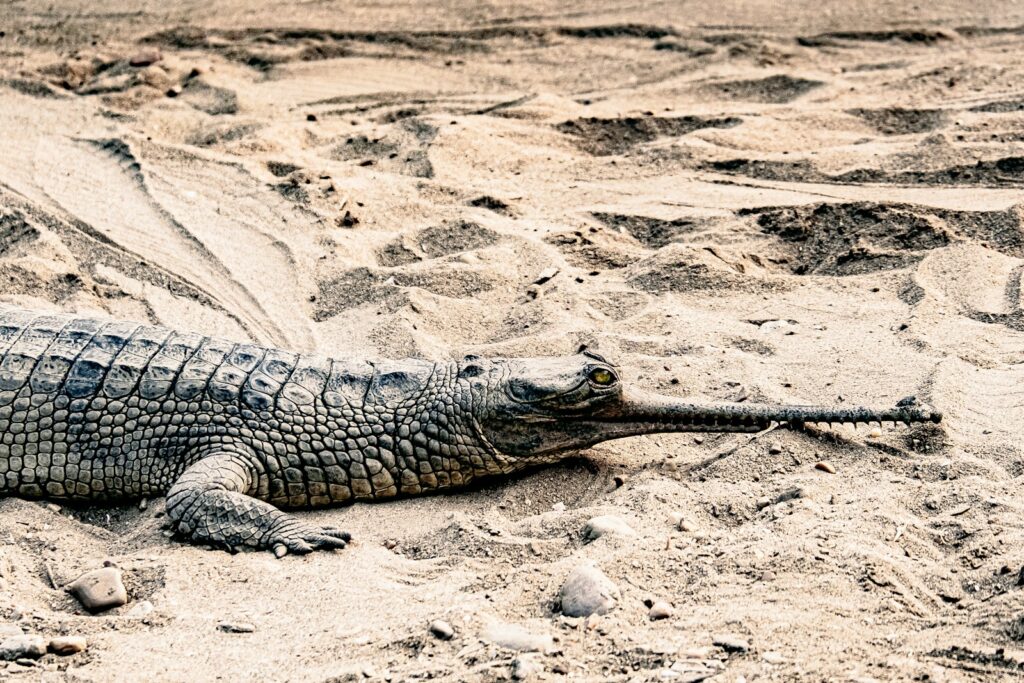
The most immediately noticeable feature that sets gharials apart is their extraordinarily long, narrow snout, which appears almost like a needle compared to the broader, more robust jaws of other crocodilians. This specialized rostrum can make up nearly 70% of the total length of their skull, creating a striking silhouette unlike any other reptile. The slender snout contains around 110 interlocking teeth specifically evolved for catching slippery fish in fast-moving rivers. Unlike the crushing jaws of traditional crocodiles that can tackle large mammals, the gharial’s thin snout would likely break if used to capture hefty prey, demonstrating nature’s trade-off between specialization and versatility.
The Male’s Distinctive Ghara
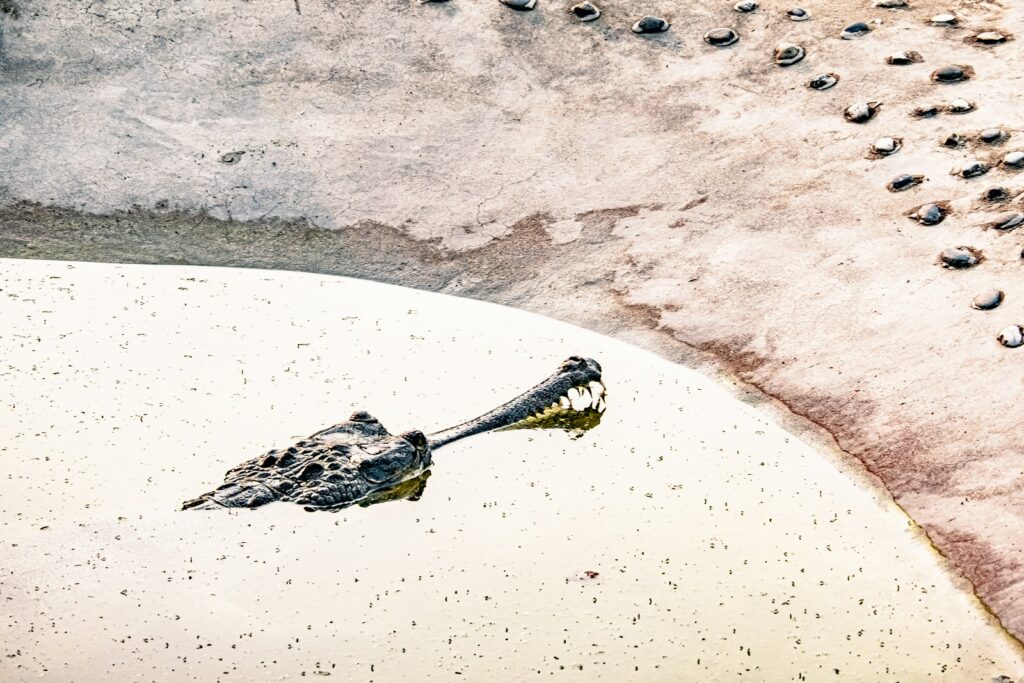
Mature male gharials develop a unique bulbous growth on the tip of their snout called a “ghara,” from which these reptiles derive their name. This fleshy protuberance resembles an earthen pot known in Hindi as a “ghara,” giving these creatures their common name. No other crocodilian species possesses anything remotely similar to this structure, making it a defining characteristic of the species. The ghara serves important reproductive functions, allowing males to produce resonant buzzing sounds during courtship and to blow bubbles that attract females. This remarkable nasal appendage also serves as a visual indicator of male health and dominance, with larger gharas typically belonging to more successful breeding males.
Their Almost Exclusively Fish-Based Diet
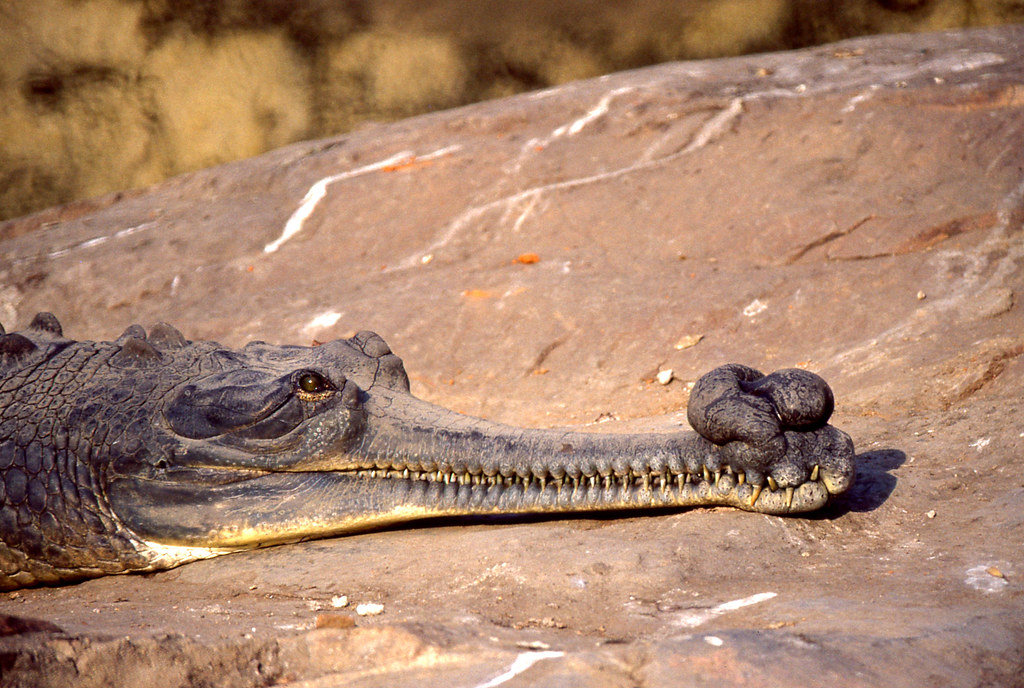
Unlike their opportunistic crocodilian relatives that consume everything from zebras to birds, gharials are hyperspecialized piscivores (fish-eaters) that rarely consume anything but fish. Their needle-like interlocking teeth are perfectly adapted for grasping and holding slippery prey but poorly suited for tearing apart larger animals. Young gharials may occasionally consume insects, frogs, and small crustaceans, but adult gharials rely almost exclusively on fish as their dietary staple. This specialized feeding strategy contrasts sharply with the generalist approach of most crocodilians, which typically expand their dietary preferences as they grow larger and stronger. The gharial’s specialized diet represents one of the most extreme examples of feeding specialization among all crocodilians.
Their Limited Terrestrial Mobility
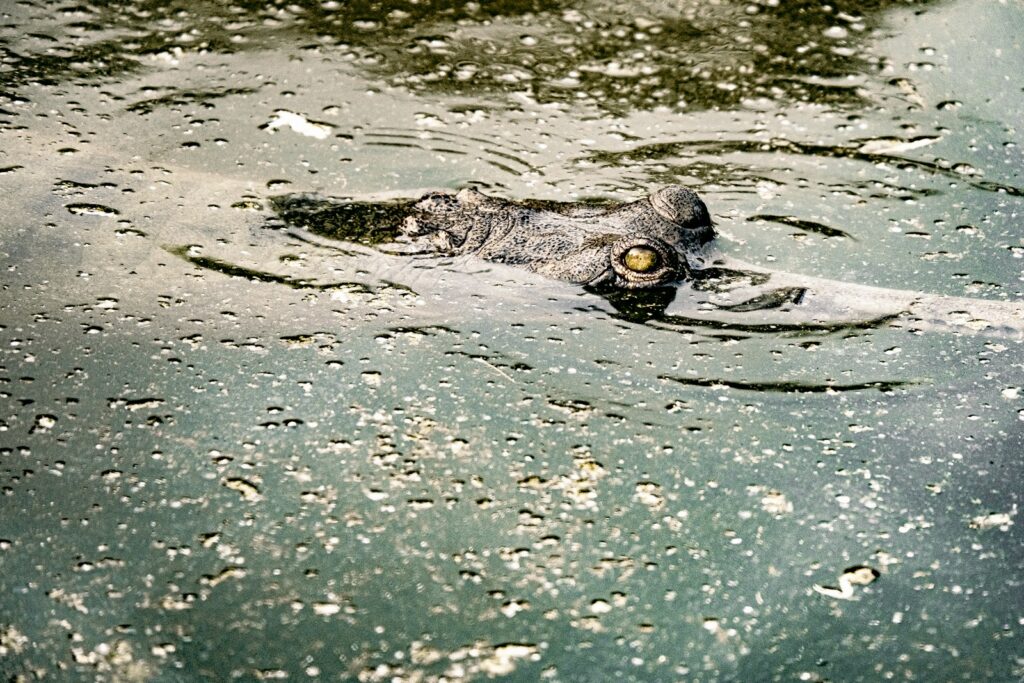
Gharials are perhaps the most aquatic of all crocodilians, with body adaptations that make them exceptionally graceful in water but awkward on land. Their legs are relatively weaker than those of other crocodilians, and they lack the powerful musculature needed for the “high walk” that alligators and crocodiles use to travel efficiently on land. Instead, gharials must push themselves forward in a sliding motion using their belly and legs, making terrestrial movement both difficult and energy-intensive. This limited mobility explains why gharials rarely venture far from water except during nesting season, when females must make the arduous journey to sandbanks to lay eggs. Their specialized aquatic lifestyle represents an evolutionary path distinctly different from their more versatile crocodilian cousins.
Their Non-Aggressive Nature Toward Humans
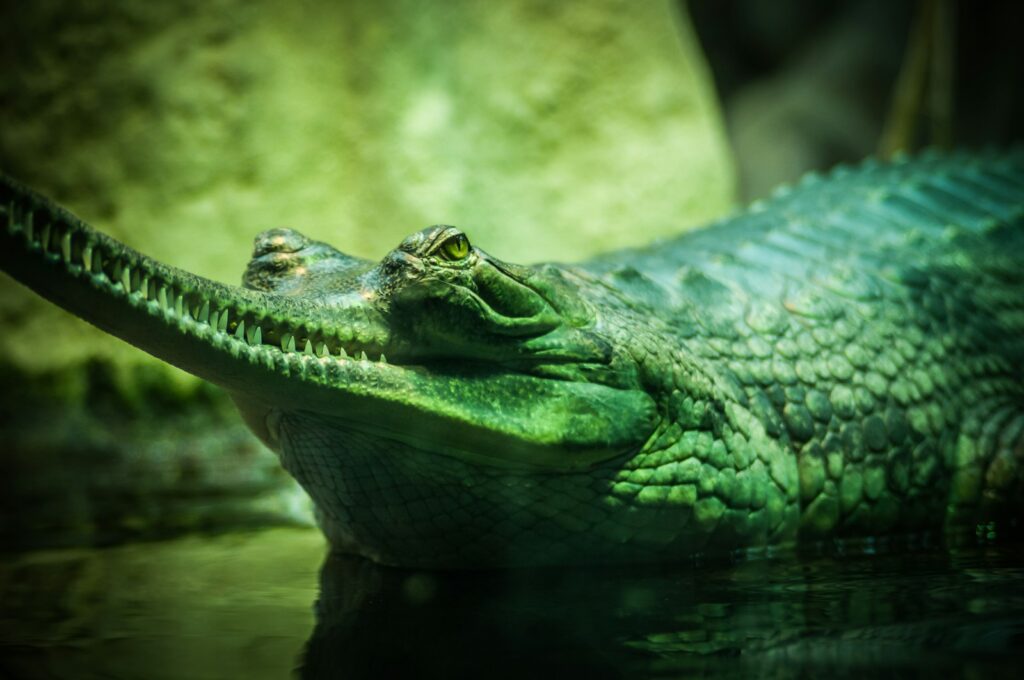
While crocodiles and alligators are responsible for hundreds of human fatalities annually, gharials have virtually no record of unprovoked attacks on humans despite their impressive size. Their specialized jaws and teeth evolved specifically for catching fish, not for dismembering large prey, making them physically incapable of the feeding strategies employed by their more dangerous relatives. The gharial’s temperament also appears notably less aggressive than other large crocodilians, with most preferring to flee from human presence rather than confront it. This non-aggressive nature has unfortunately contributed to their vulnerability to human persecution, as their docile behavior makes them easier targets for poaching and harassment. Conservation efforts often emphasize educating local communities about the gharial’s harmless nature to reduce persecution based on unfounded fears.
Their Unique Swimming Technique
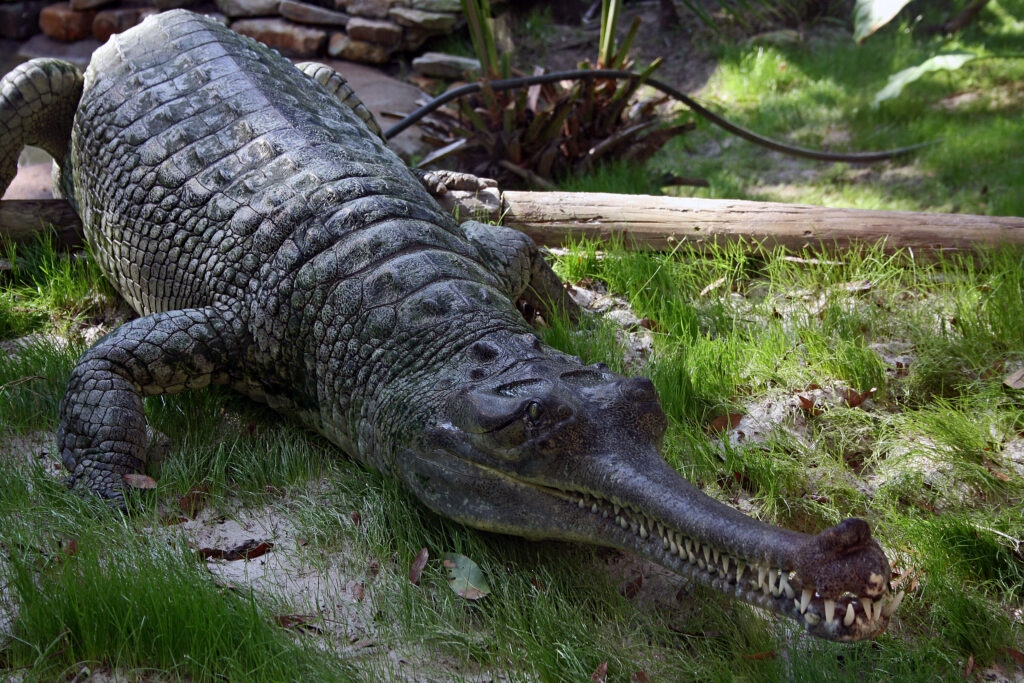
Gharials employ a distinctive swimming technique that sets them apart from other crocodilians, using their powerful, laterally compressed tails with exceptional efficiency. While all crocodilians use their tails for propulsion, gharials have taken this adaptation to another level, with a swimming style more reminiscent of fish than typical crocodilians. They keep their legs pressed close to their bodies while swimming, reducing drag and allowing for swift, silent movement through fast-flowing rivers. This specialized swimming technique enables gharials to navigate rapids and strong currents that would challenge other crocodilians, allowing them to exploit ecological niches unavailable to broader-snouted relatives. Their hydrodynamic body shape and swimming style represent one of the most extreme aquatic specializations among all crocodilians.
Their Distinctive Nesting Behavior
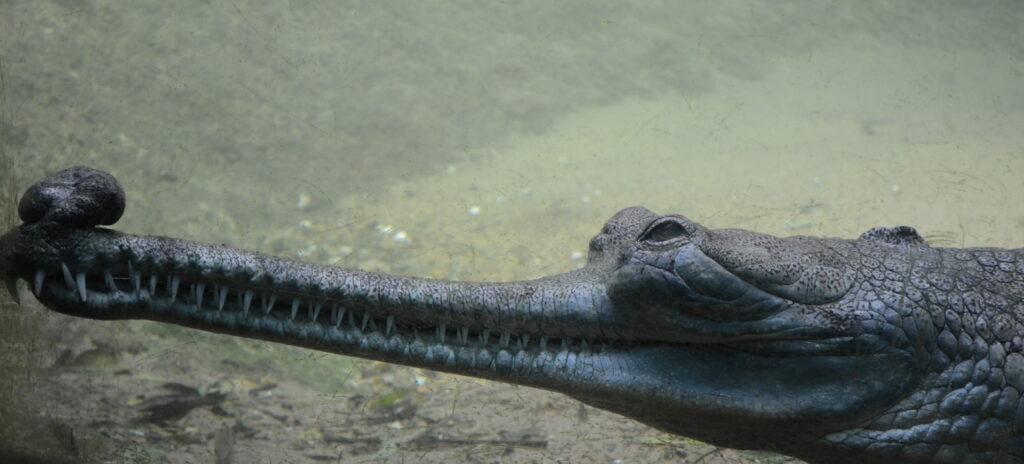
Female gharials demonstrate nesting behavior that differs significantly from most other crocodilians, particularly in their approach to communal nesting and hatchling care. They prefer to nest on sandy banks in the dry season when water levels recede, often creating nesting colonies where multiple females lay eggs in close proximity. Unlike many crocodilians that fiercely defend individual nests, female gharials often share nesting responsibilities, with multiple females sometimes attending to a communal nesting area. While mother gharials do provide some protection for hatchlings, they don’t carry their young in their mouths as carefully as crocodiles and alligators do, perhaps due to the limitations of their specialized snout structure. This cooperative approach to nesting represents an interesting evolutionary adaptation to their riverine environment.
Their Taxonomic Isolation

Gharials occupy a unique position in the crocodilian family tree, being so distinctive that they belong to their own family, Gavialidae, separate from true crocodiles and alligators. Modern genetic and morphological studies suggest that gharials diverged from other crocodilians over 65 million years ago, representing an ancient lineage that has followed its own evolutionary path. Their closest living relative is the false gharial (Tomistoma schlegelii) of Southeast Asia, which despite having a somewhat similar appearance, differs significantly in both behavior and physical characteristics. This extreme taxonomic isolation underscores just how different gharials are from conventional crocodilians, essentially representing a separate experiment in crocodilian evolution. Their unique evolutionary history helps explain their highly specialized adaptations found nowhere else in the crocodilian order.
Their Critical Conservation Status
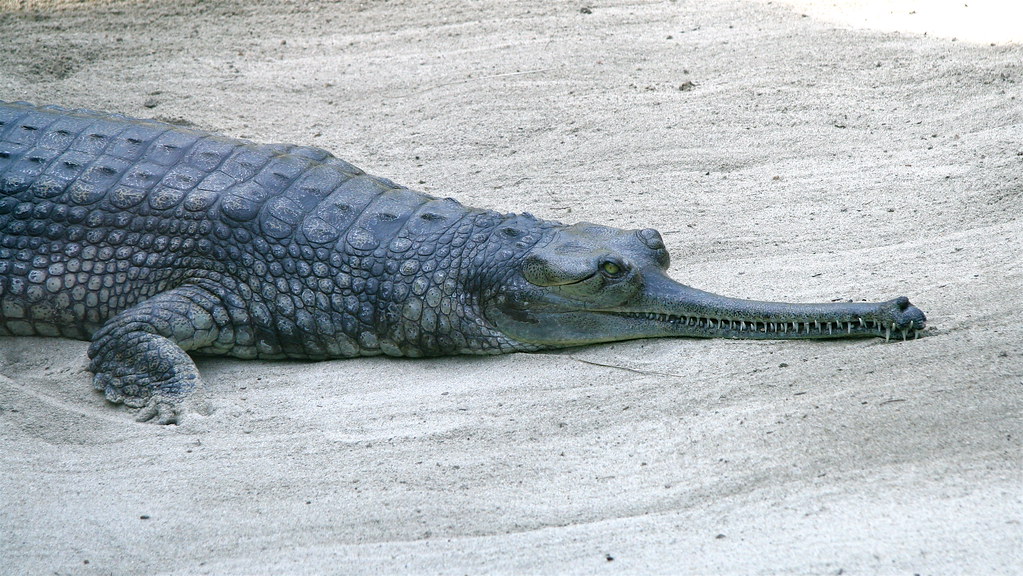
Unlike many crocodilians that have shown remarkable resilience to habitat changes, gharials stand among the most endangered of all crocodilian species, with population dynamics dramatically different from their more adaptable relatives. Their total wild population has plummeted by over 98% since the 1940s, with fewer than 1,000 breeding adults remaining in fragmented populations across the Indian subcontinent. Their extreme habitat specialization makes them particularly vulnerable to river modifications like dams and barrages that alter water flow and eliminate suitable nesting sites. Unlike some crocodile species that can thrive in agricultural canals or modified habitats, gharials require pristine river systems with sandy banks and abundant fish populations, making conservation efforts particularly challenging. Their precarious status has made gharials the focus of intensive conservation programs that have no parallel among more resilient crocodilian species.
Their Distinct Sensory Adaptations
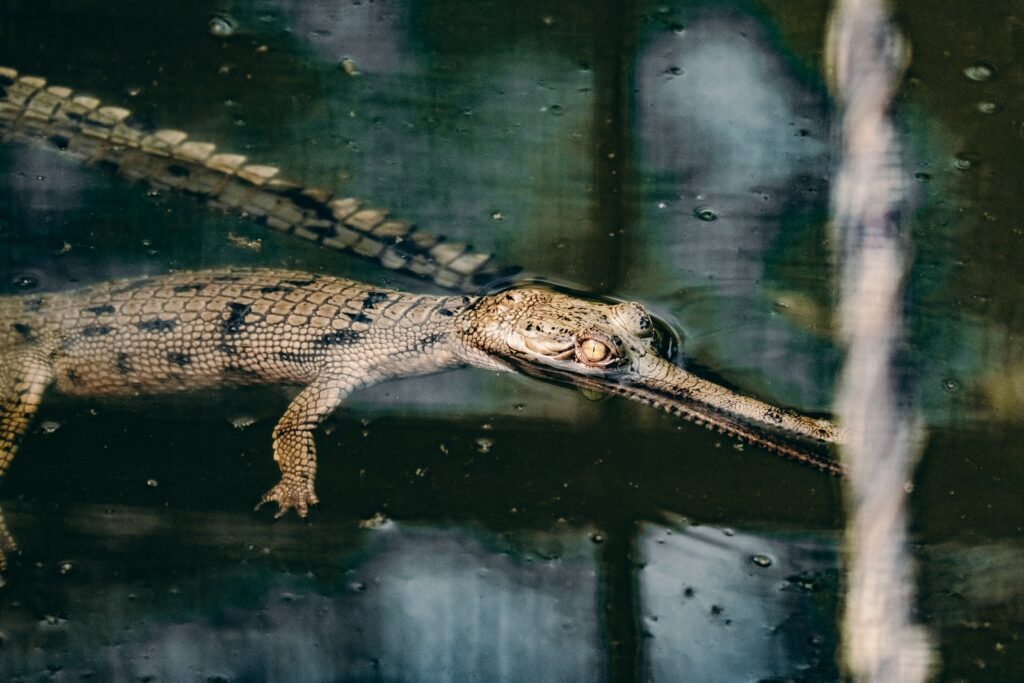
Gharials possess specialized sensory adaptations uniquely suited to their aquatic lifestyle that differ significantly from those of other crocodilians. Their eyes are positioned higher on their skull than most crocodilians, allowing them to remain almost completely submerged while still observing their surroundings. They possess specialized pressure receptors along their jaws called integumentary sense organs (ISOs) that are particularly sensitive to water movements, helping them detect fish swimming nearby even in murky waters with low visibility. Their extremely narrow jaws contain a higher concentration of these sensory receptors than found in broader-snouted crocodilians, creating a remarkably sensitive detection system for underwater prey. These sensory specializations represent targeted adaptations for their fish-hunting lifestyle, demonstrating how gharials have evolved sensory capabilities perfectly matched to their ecological niche.
Their Cultural Significance
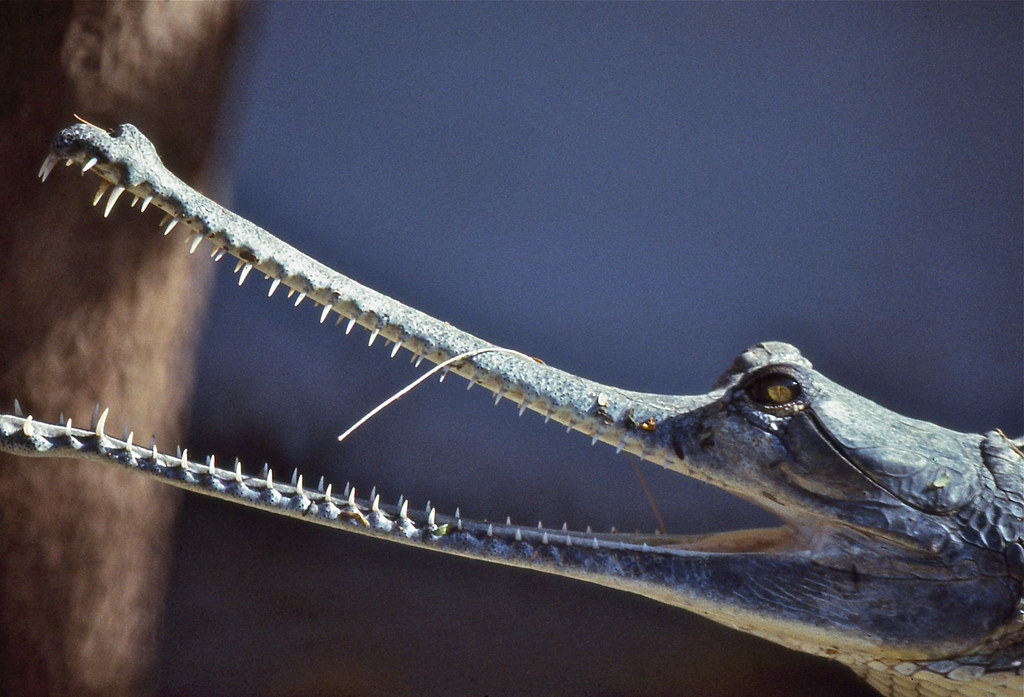
Gharials hold a unique position in the cultural heritage of the Indian subcontinent that differs substantially from how other crocodilians are perceived worldwide. In Hindu mythology, the gharial is associated with Makara, the vehicle of the river goddess Ganga and the water god Varuna, giving them a sacred status not typically afforded to other crocodilians. Their non-threatening nature has historically fostered more positive relationships with local communities compared to the feared status of man-eating crocodiles. Many ancient temples along the Ganges and Chambal rivers feature gharial motifs in their architecture, demonstrating their cultural significance in historical Indian civilization. Unlike the almost universally feared image of crocodiles in most cultures, gharials have often been viewed as beneficial river guardians that control fish populations without threatening human safety.
Conclusion
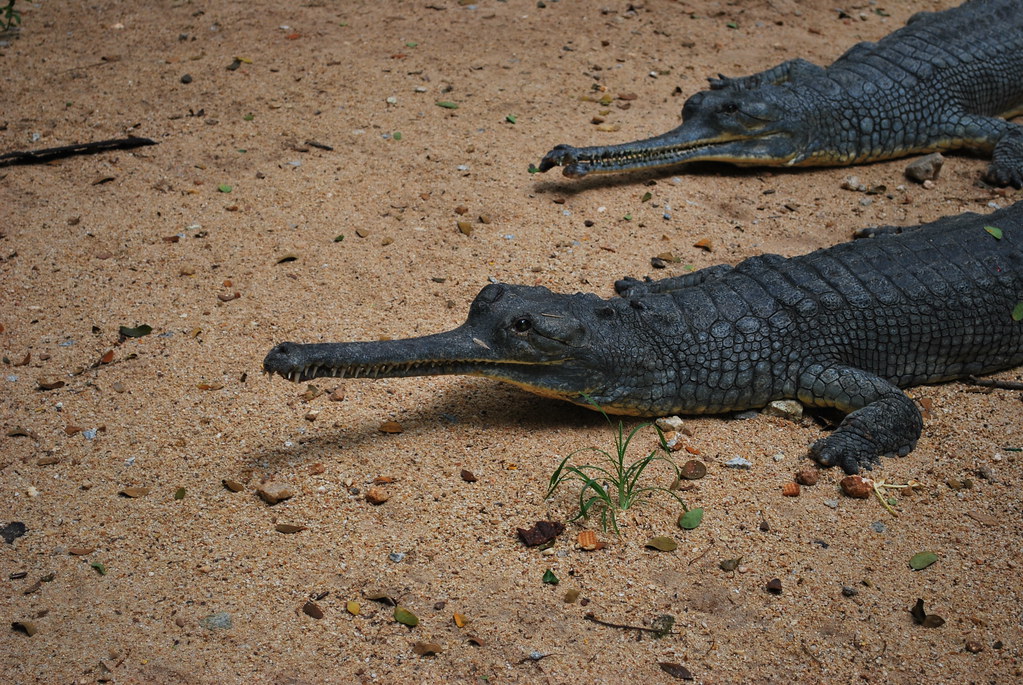
The gharial stands as a testament to the remarkable diversity within the crocodilian order, demonstrating how evolution can produce highly specialized forms even within well-established animal groups. From their needle-like snouts to their unique ghara, specialized diet, and distinctive behaviors, gharials represent a fascinating evolutionary path distinct from conventional crocodilians. Unfortunately, these specializations that make gharials so unique also contribute to their vulnerability in today’s changing world. Their extreme adaptations to specific ecological niches mean they cannot easily adjust to habitat modifications, making conservation efforts particularly urgent. Understanding and appreciating what makes gharials unique not only enriches our knowledge of biodiversity but also underscores the importance of preserving these living fossils before they disappear forever. As one of nature’s most specialized designs, the gharial reminds us that evolutionary uniqueness is both fascinating and fragile.

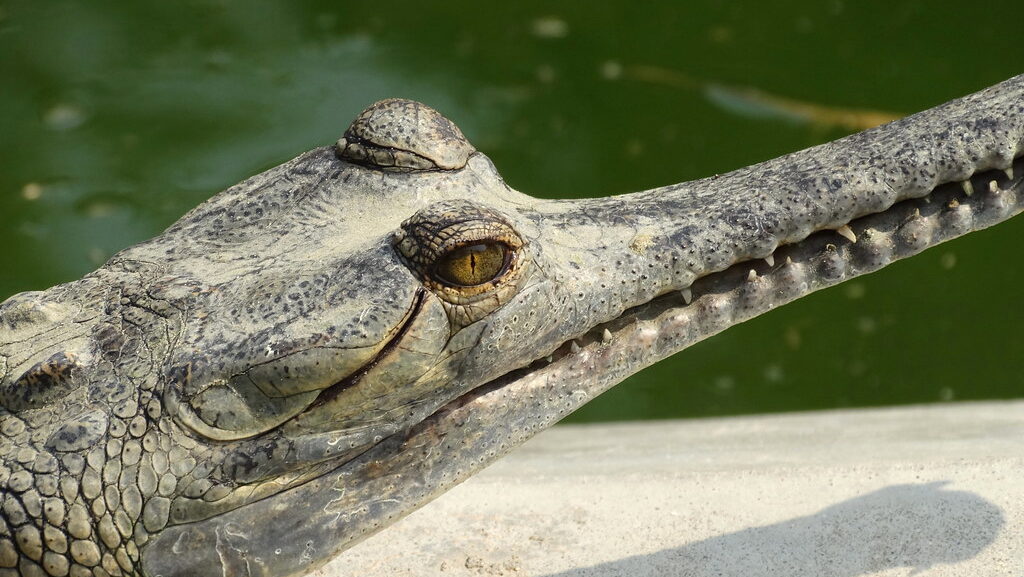

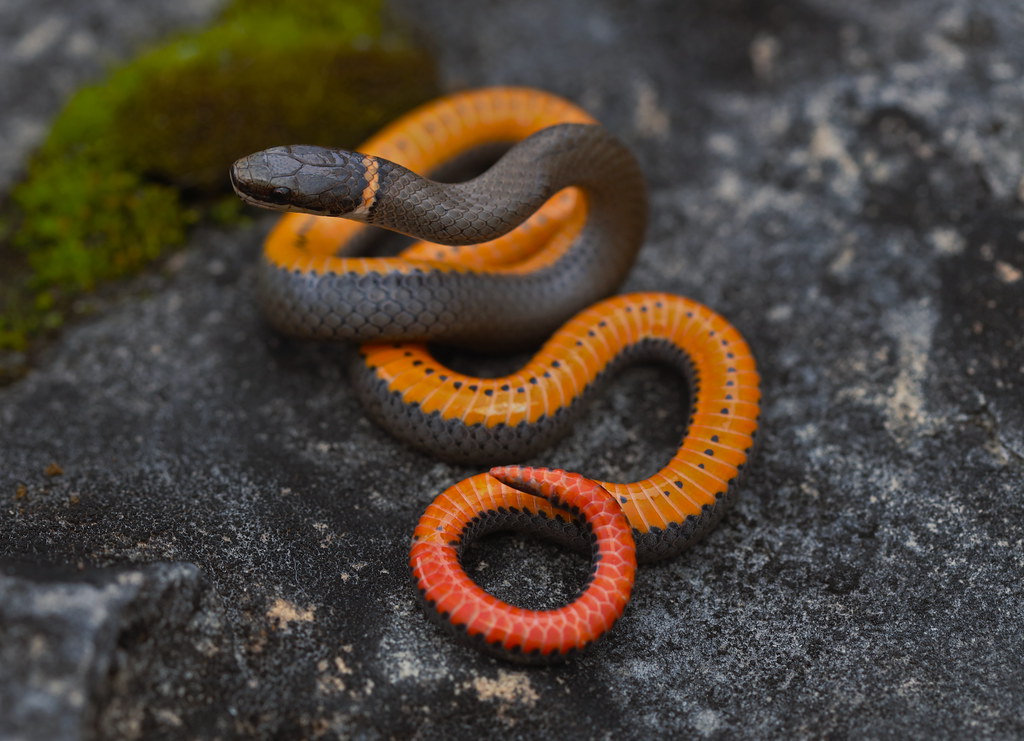
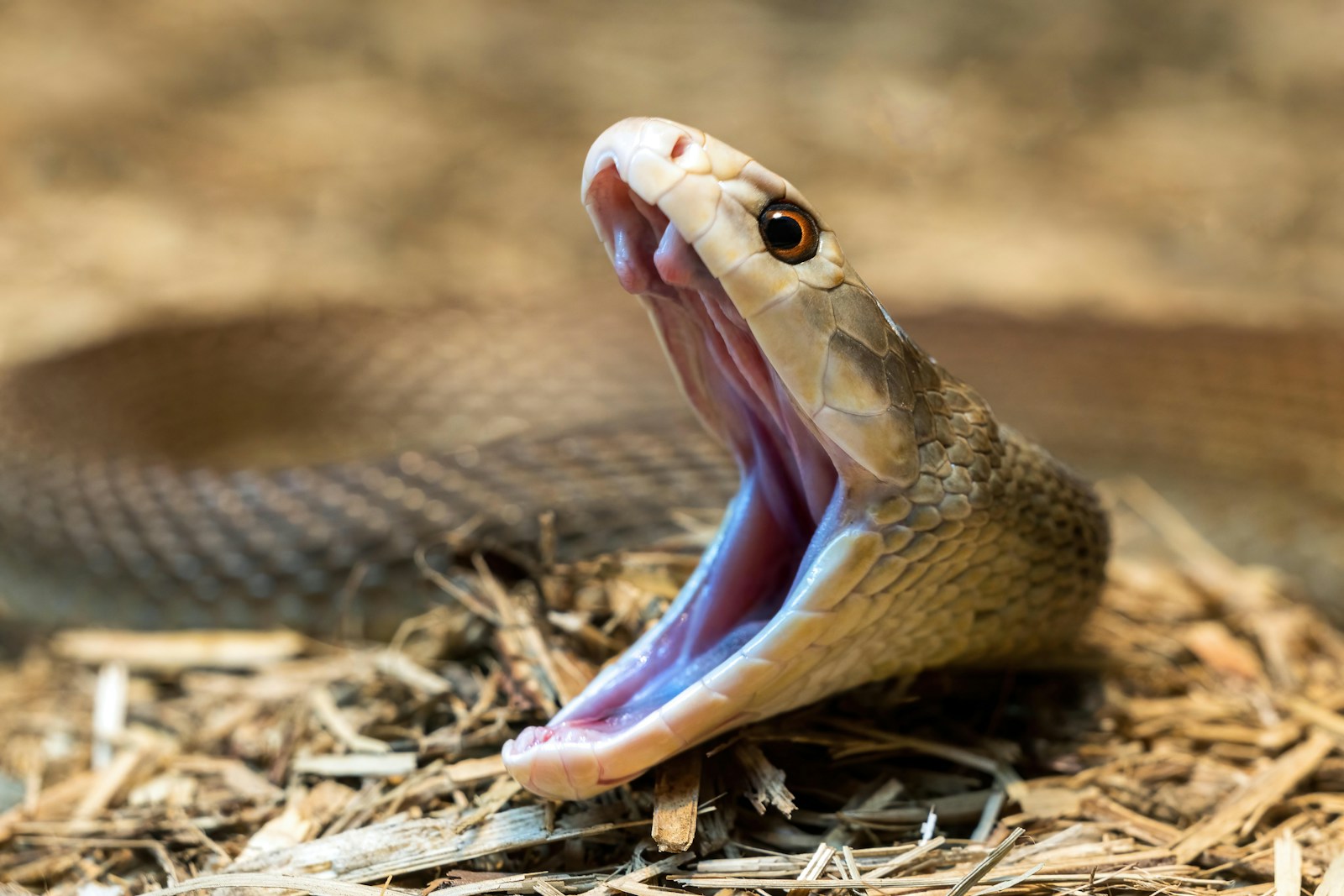
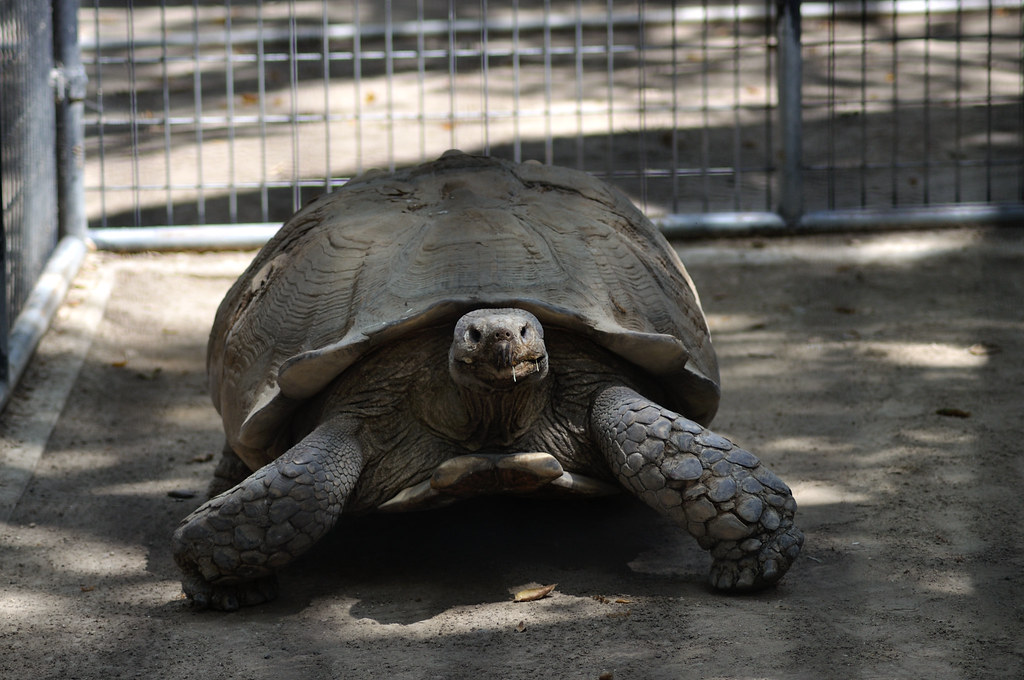
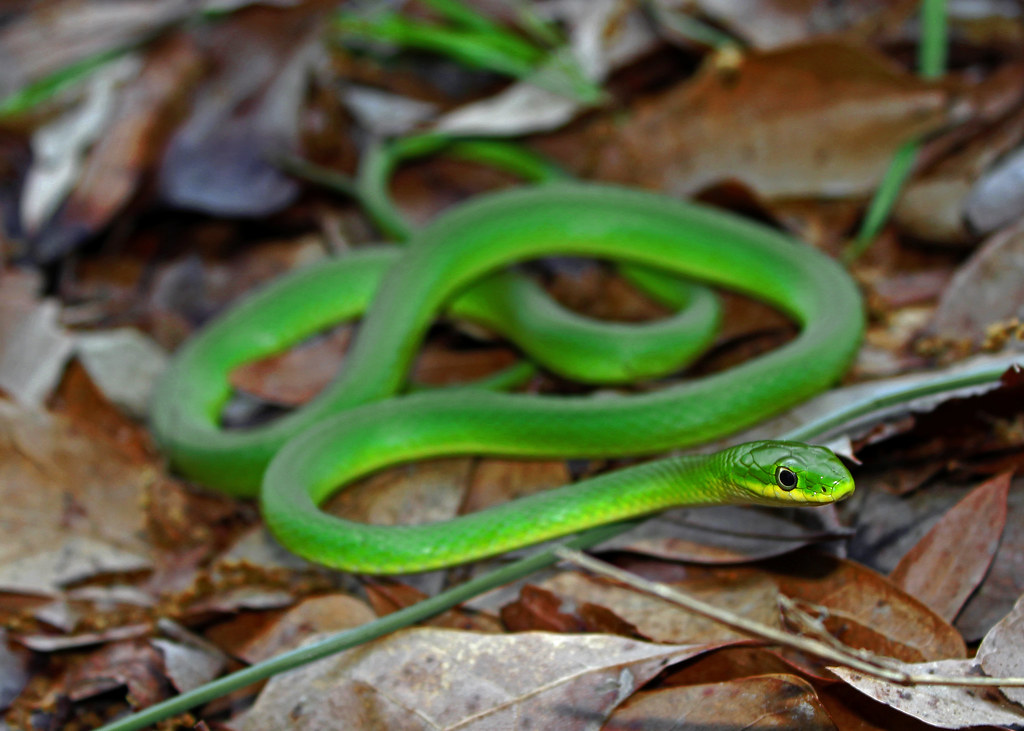
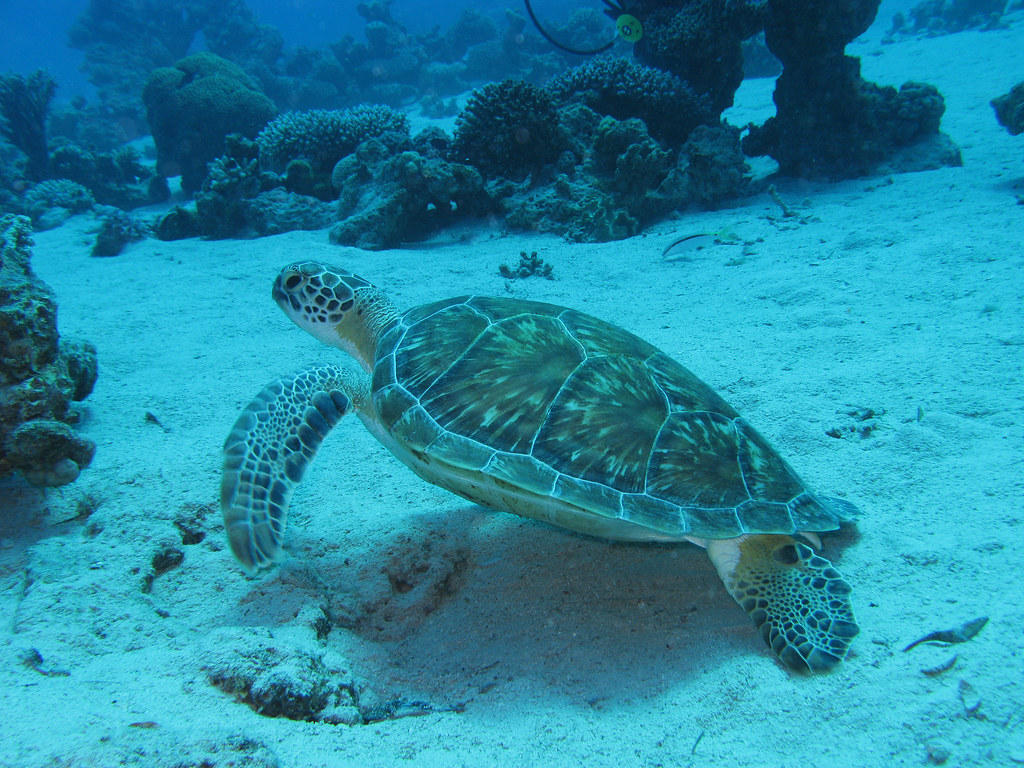

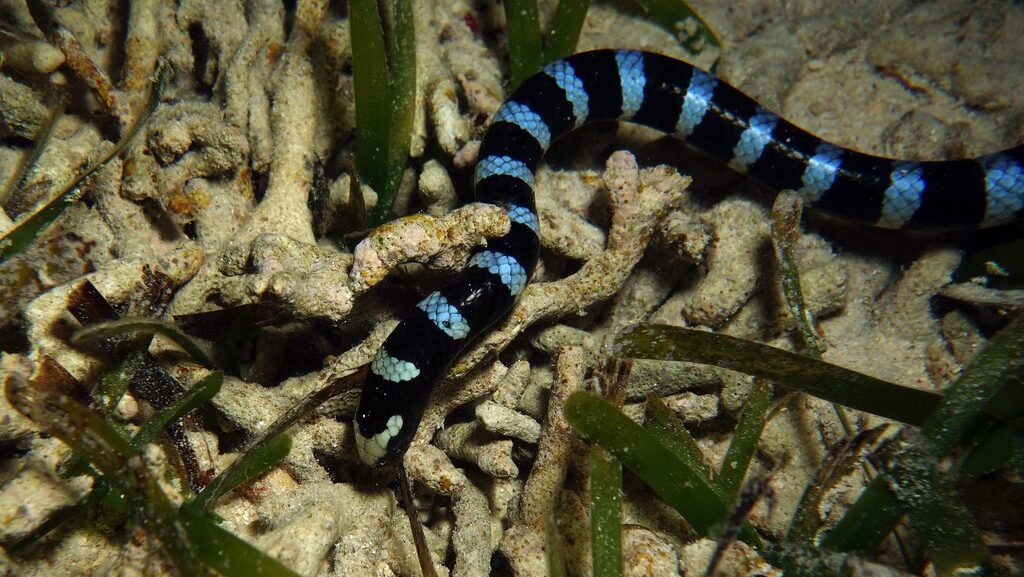





Leave a Reply